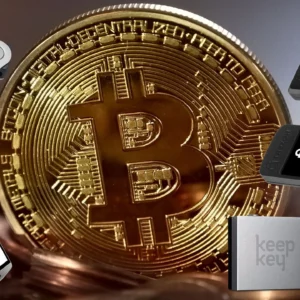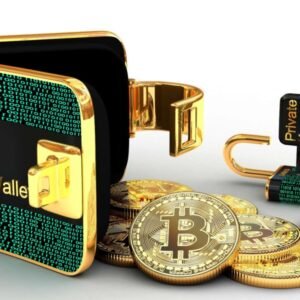Crypto Security 101: How to Detect Fake Wallet Apps, Airdrops & Phishing Links Before It’s Too Late
In a world where blockchain is redefining how we transact, invest, and store value, crypto security isn’t just a side note—it’s the headline. The decentralized nature of cryptocurrencies, while empowering, also makes the ecosystem ripe for manipulation, especially when it comes to fake wallet apps, scammy airdrops, and cleverly disguised phishing links. In 2024 alone, over $1.8 billion was lost to crypto scams, many of which were preventable with better awareness.
This guide breaks down the psychology, tactics, and red flags of these schemes, showing you exactly how to spot them before they wipe out your hard-earned digital assets.
Why Crypto Security Matters More Than Ever
Imagine losing your entire crypto portfolio in one click. It happens every day. Unlike banks, there’s no “forgot password” or “call customer service” in the blockchain world. Once your funds are gone, they’re gone.
Cybercriminals are evolving. Whether it’s a fake app posing as a trusted wallet, or a phishing link dressed in friendly UI, their methods are getting more sophisticated and deceptive. That’s why learning to recognize these red flags is a non-negotiable skill for any crypto investor.
The Rise of Fake Wallet Apps: What’s the Catch?
Crypto wallet apps are the gatekeepers to your digital assets. That also makes them the prime target for bad actors. In recent years, malicious apps have even slipped past app store vetting processes and landed on platforms like Google Play and the Apple App Store.
Common Tactics Used by Fake Wallet Apps
- Cloning Popular Wallets: Scammers replicate the user interface of legitimate wallets like MetaMask, Trust Wallet, or Exodus.
- Brand Hijacking: These apps often have the same logo, colors, and description, creating a false sense of trust.
- Backdoor Access: Once installed, they silently extract your seed phrase or private keys.
- Fake Reviews: Many have hundreds of five-star reviews, often generated by bots to boost credibility.
Real-World Example:
A fake version of the Phantom Wallet was used to trick Solana users into entering their private keys, resulting in millions of dollars in lost funds.
How to Spot a Fake Wallet App
Use this table to quickly assess the legitimacy of any wallet app before downloading:
| Red Flag | What It Means | What To Do |
|---|---|---|
| App has few downloads | May not be widely adopted or vetted | Stick to popular, well-reviewed apps |
| Generic developer name | Not associated with a known brand | Research the developer and cross-check on official site |
| URL mismatch on site | URL in app store doesn’t match official site | Only download from official links |
| Requests unnecessary permissions | May be trying to access more data than needed | Deny permissions or uninstall |
Tip: Always download wallet apps directly from the official websites, and verify links through communities like Reddit’s r/CryptoCurrency.
Beware of Airdrop Scams: Free Tokens or Trojan Horses?
Airdrops are a popular marketing tool used by legit crypto projects to distribute free tokens and build community. But scammers exploit this strategy too.
Types of Airdrop Scams
- “Claim your reward” phishing: Directs users to fake sites that steal credentials.
- Wallet Drainer Smart Contracts: By interacting with a contract, you inadvertently grant access to your wallet.
- Fake Token Listings: The airdropped token appears valuable but is actually worthless or locked.
A notorious example is the “UniSwap Airdrop” scam, where victims were tricked into connecting wallets to a malicious website.
Signs of a Suspicious Airdrop
- You didn’t sign up but received a token.
- The token’s website looks generic or plagiarized.
- You’re asked to “connect wallet to claim.”
- Smart contract permissions include “Approve” or “TransferFrom” access.
Always verify airdrops through sites like CoinMarketCap Airdrop Tracker or community platforms.
Phishing Links: The Bait That Looks Just Right
You get a message on Telegram or Discord. Or maybe a DM on Twitter/X. “Hey, you’ve won 500 USDT! Just connect your wallet here.”
It’s classic phishing—and it works.
Where Phishing Links Appear
- Fake customer support responses on Reddit or Twitter
- Discord DMs impersonating moderators
- Google Ads leading to scam sites
- Emails spoofing well-known exchanges
Red Flags to Watch For
- Misspelled URLs: Ex.
binanse.cominstead ofbinance.com - Urgency: “Act fast before the airdrop ends!”
- Requests to connect wallet or enter seed phrase
- Too-good-to-be-true offers
According to Chainalysis, phishing remains the most common vector for crypto hacks in 2024, often leading to immediate asset loss.
Safe Practices to Protect Your Crypto
Knowing the red flags is only half the battle. Here’s what you should actively do:
1. Use a Hardware Wallet
- Devices like Ledger or Trezor keep your keys offline.
- Even if you click a bad link, your assets stay secure.
2. Bookmark Official Sites
- Only access exchanges or wallets via bookmarks.
- Avoid clicking links in emails or DMs.
3. Enable Two-Factor Authentication (2FA)
- Use Google Authenticator, not SMS-based 2FA.
- It’s more secure and harder to intercept.
4. Monitor Wallet Activity
5. Revoke Unused Permissions
- Go to Revoke.cash and regularly remove old dApp permissions.
Comparison: Legit vs Scam Tactics
| Aspect | Legit Crypto Project | Scam Operation |
|---|---|---|
| Communication | Uses verified Twitter/X, Discord, Telegram | Random DMs, vague emails |
| App/Website Design | Professional, consistent UI | Low-quality, often plagiarized |
| Domain | Verified and secure (https) | Misspellings, odd extensions (.xyz) |
| Airdrop Requirements | Basic (follow, retweet) | Complex or asks for wallet access |
| Community Support | Transparent, helpful mods | No real help or fake mods |
The Psychology Behind These Scams
It’s not just about tech. It’s about emotion. Scammers prey on urgency, FOMO (fear of missing out), and the lure of free money.
You see a flashy UI, a countdown timer, a promise of $500 in rewards. In that moment, your rational brain takes a backseat.
According to Stanford research, scams work because they trigger emotional responses, not logical ones. The more we understand our own biases, the harder it becomes for bad actors to manipulate us.
Building a Personal Crypto Security Routine
Just like brushing your teeth, crypto hygiene needs to be habitual.
Here’s a weekly routine to keep your digital life secure:
- Monday: Check wallet activity
- Wednesday: Review and revoke permissions
- Friday: Backup seed phrases (offline)
- Sunday: Educate yourself—read one article or forum thread
Use a security checklist app like Notion or Todoist to stay on track.
Final Thoughts: Awareness Is Your Best Asset
The crypto landscape is evolving, and so are the threats. But you don’t need to be a cybersecurity expert to stay safe. A healthy dose of skepticism, some practical tools, and a commitment to ongoing learning can go a long way.
As we push toward a more decentralized future, personal responsibility becomes paramount. So, bookmark this guide, share it with a friend, and never stop asking: “Is this too good to be true?”
Because when it comes to crypto, if you don’t guard your assets, no one else will.






